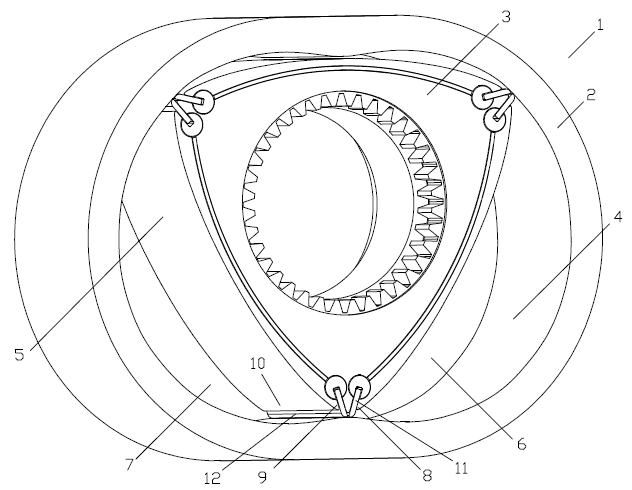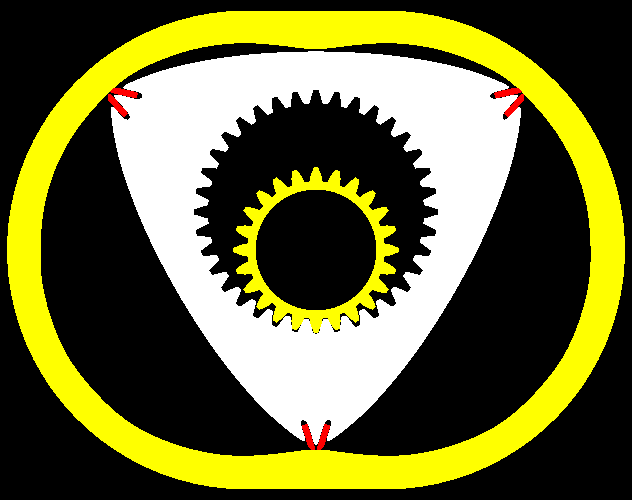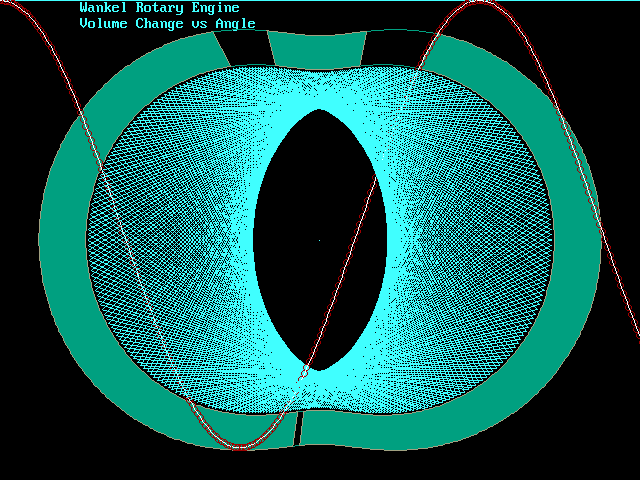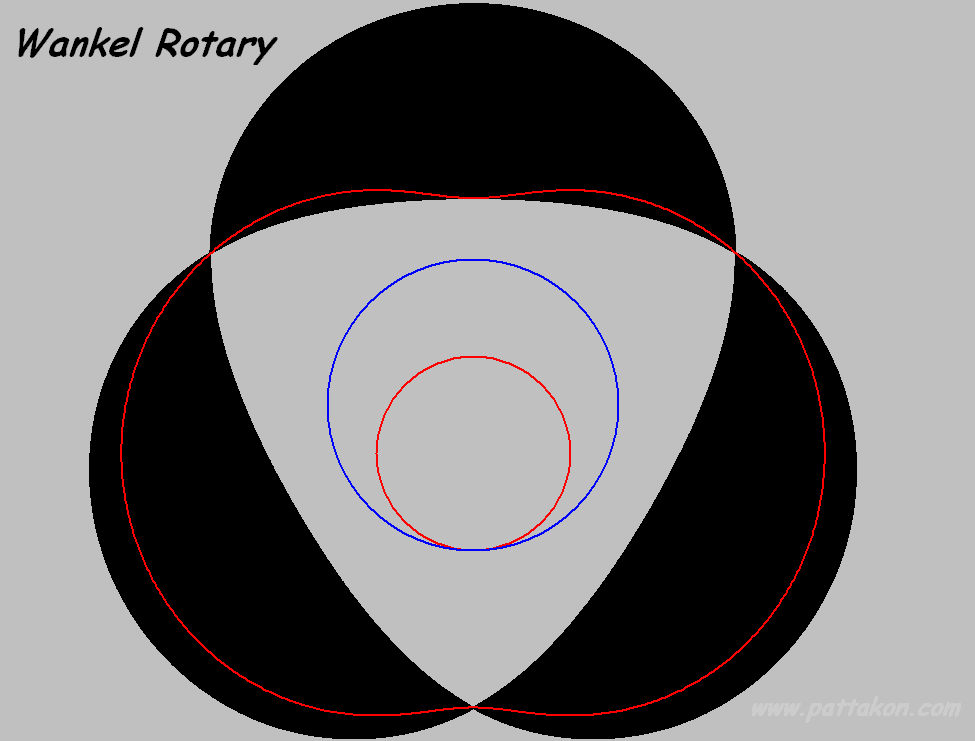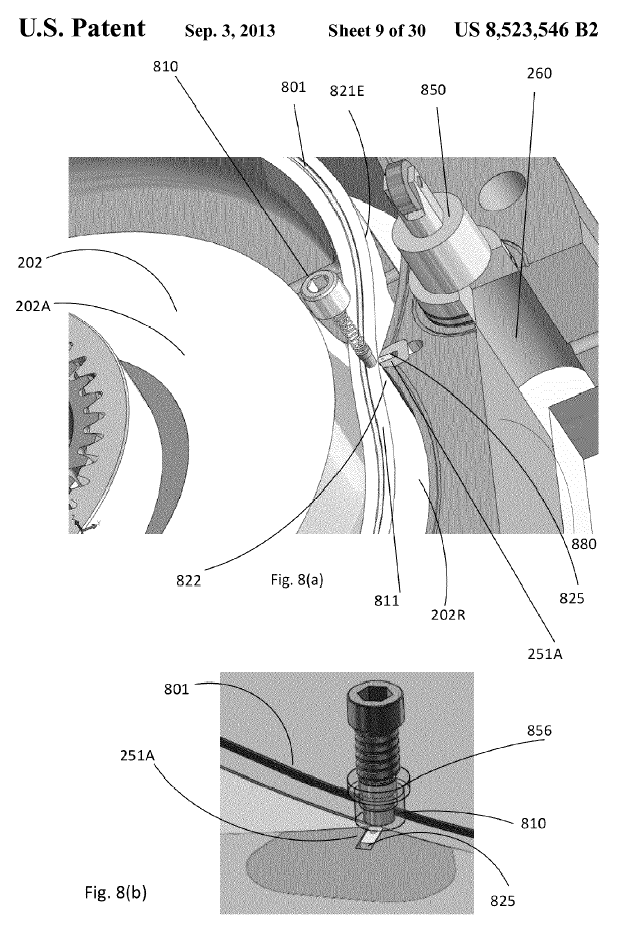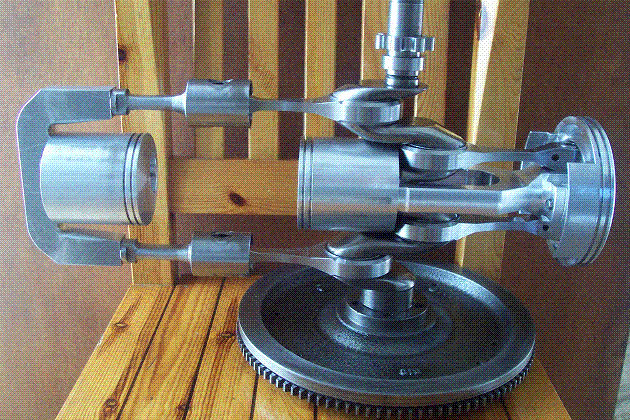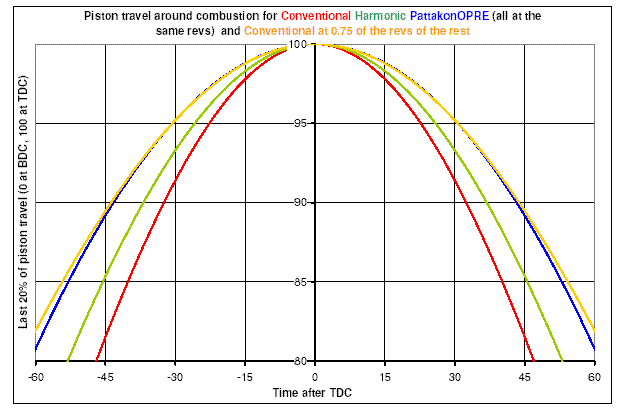manolis
Aluminum
- Joined
- Nov 25, 2006
- Location
- Athens Greece
Hello all.
Here is the inner body of an unconventional rotary engine and the way to cut it in a lathe:
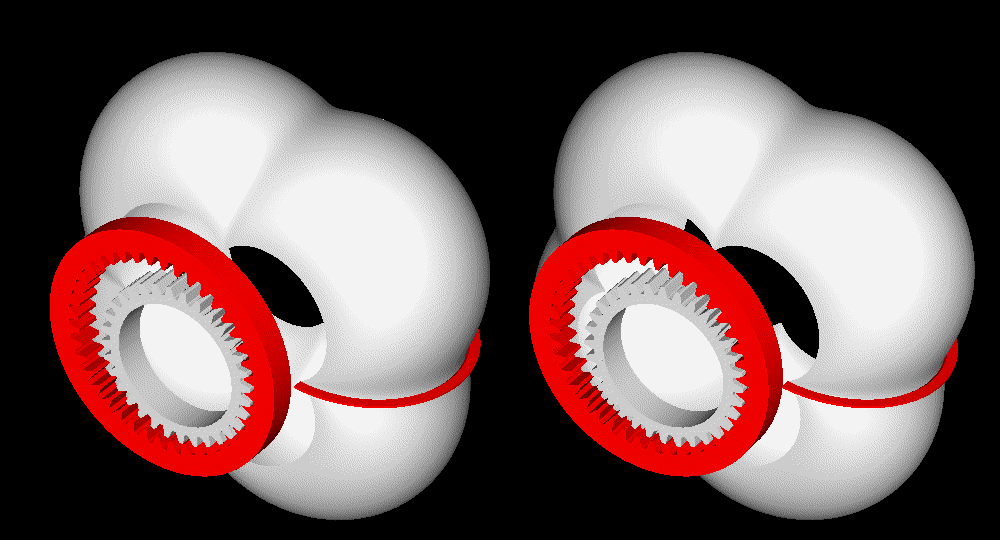
(instructions in how to see it stereoscopically at http://www.pattakon.com/pattakonStereoscopy.htm )
At operation it would be like:
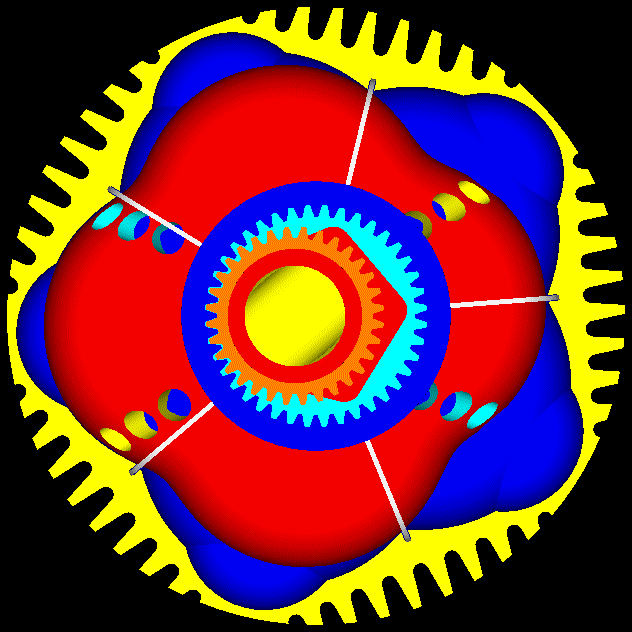
It comprises two only parts, each spinning at constant speed about its own fixed axis (which means perfect balancing without any balance webs).
The eccentric shaft of the Wankel RX8 and of the LiquidPiston rotary engines is eliminated.
The power / torque is delivered by a shaft / extension of the inner body:
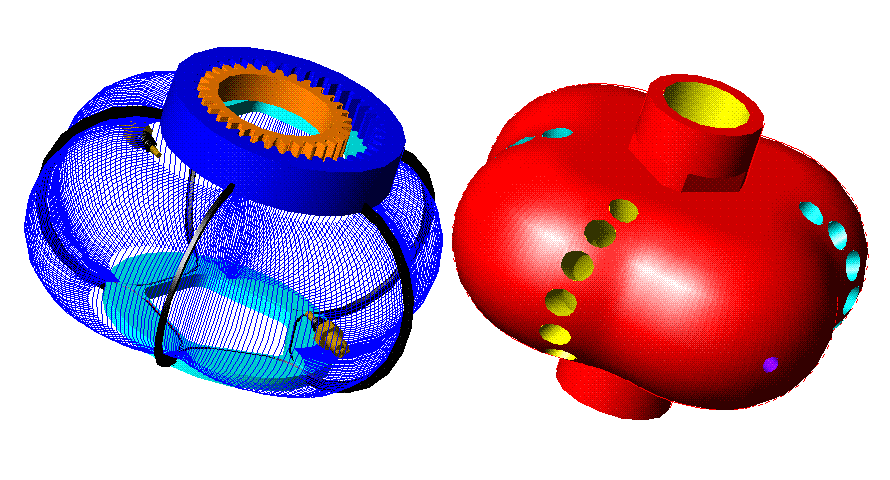
There are two combustions per shaft rotation (i.e. as much as in a Wankel with two rotors).
The big difference is in the sealing.
More about how this engine (PatWankel) operates are at http://www.pattakon.com/pattakonPatWankel.htm
Regarding the machining of the working surface shown in the first animation:
On the chock of a lathe it is secured eccentrically a shaft.
The red gearwheel is secured immovable on the lath bed.
The body with its gearwheel (white) is rotatably mounted on the shaft.
As the chock rotates, the body to be machined performs a combined motion (it spins about the shaft and it orbits together with the shaft).
Given the shape of the seals to be used (the simplest form? the circular), the cutting tool has to follow a specific “path” (like half circle, for instance) in order to create / form the working surface on the part (the working surface is whereon the seals will abut and slide during operation; the seals are mounted in grooves made on the outer body).
In case of seals having simple form, even a conventional (not CNC) lathe can be used.
Similarly for the honing / polishing.
The material is to be either spheroidal graphite iron (as in the cylinder liners).
Thoughts? (like: problems you see)
Thanks
Manolis Pattakos
Here is the inner body of an unconventional rotary engine and the way to cut it in a lathe:

(instructions in how to see it stereoscopically at http://www.pattakon.com/pattakonStereoscopy.htm )
At operation it would be like:

It comprises two only parts, each spinning at constant speed about its own fixed axis (which means perfect balancing without any balance webs).
The eccentric shaft of the Wankel RX8 and of the LiquidPiston rotary engines is eliminated.
The power / torque is delivered by a shaft / extension of the inner body:

There are two combustions per shaft rotation (i.e. as much as in a Wankel with two rotors).
The big difference is in the sealing.
More about how this engine (PatWankel) operates are at http://www.pattakon.com/pattakonPatWankel.htm
Regarding the machining of the working surface shown in the first animation:
On the chock of a lathe it is secured eccentrically a shaft.
The red gearwheel is secured immovable on the lath bed.
The body with its gearwheel (white) is rotatably mounted on the shaft.
As the chock rotates, the body to be machined performs a combined motion (it spins about the shaft and it orbits together with the shaft).
Given the shape of the seals to be used (the simplest form? the circular), the cutting tool has to follow a specific “path” (like half circle, for instance) in order to create / form the working surface on the part (the working surface is whereon the seals will abut and slide during operation; the seals are mounted in grooves made on the outer body).
In case of seals having simple form, even a conventional (not CNC) lathe can be used.
Similarly for the honing / polishing.
The material is to be either spheroidal graphite iron (as in the cylinder liners).
Thoughts? (like: problems you see)
Thanks
Manolis Pattakos


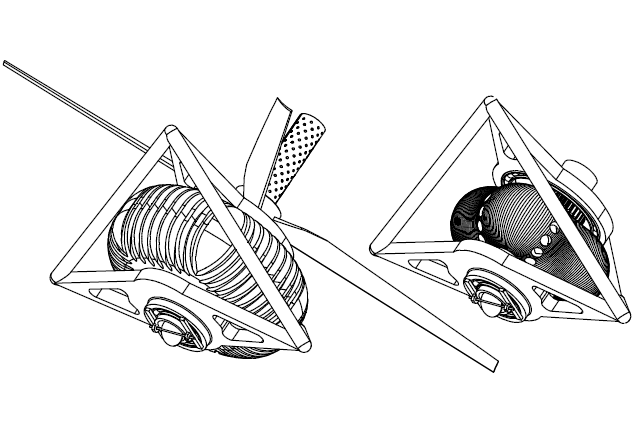
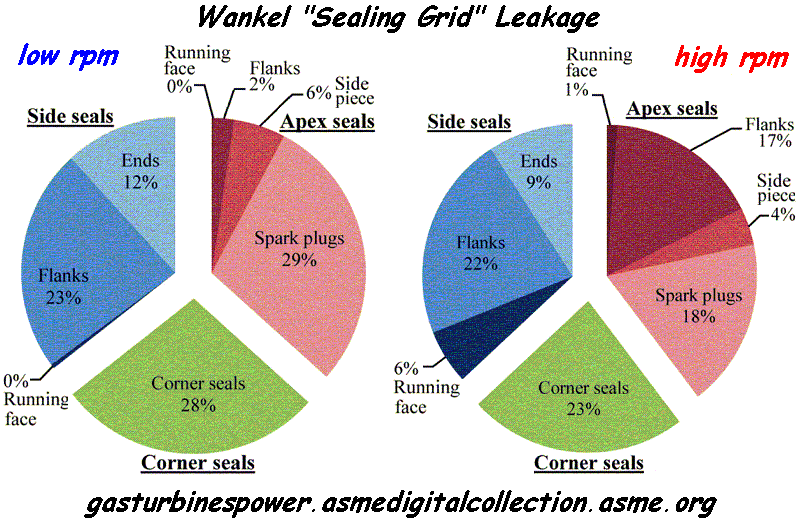
 .......I get the feeling you're quite new to machining.
.......I get the feeling you're quite new to machining.
